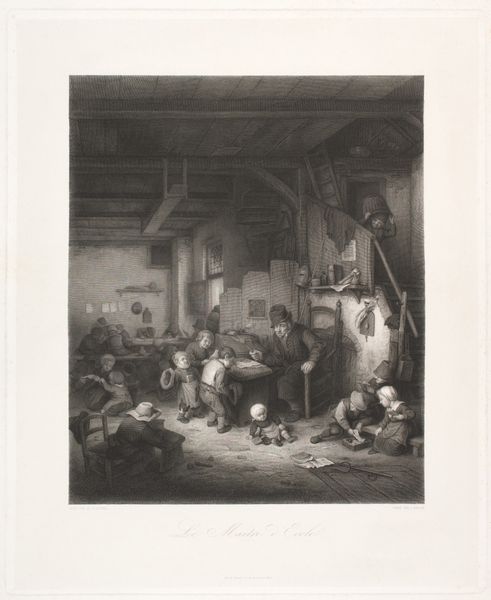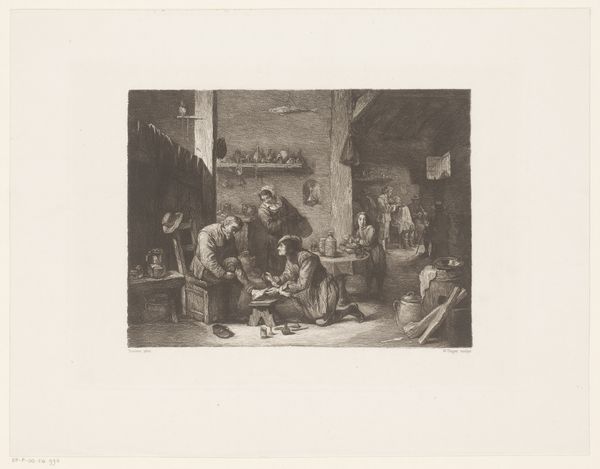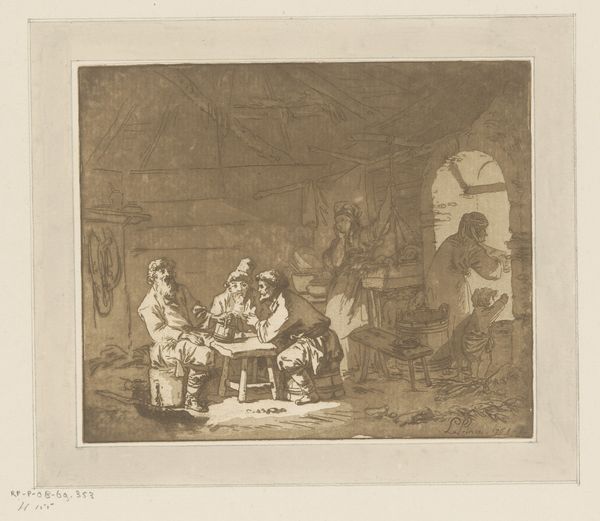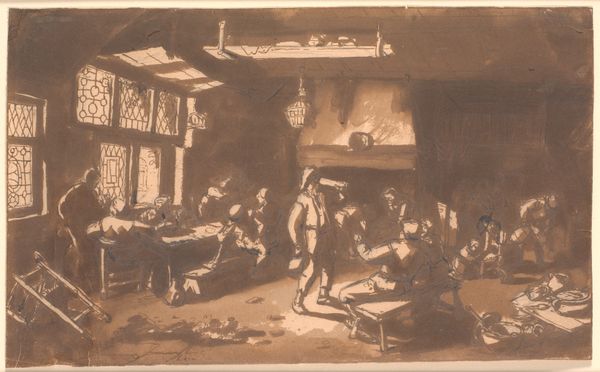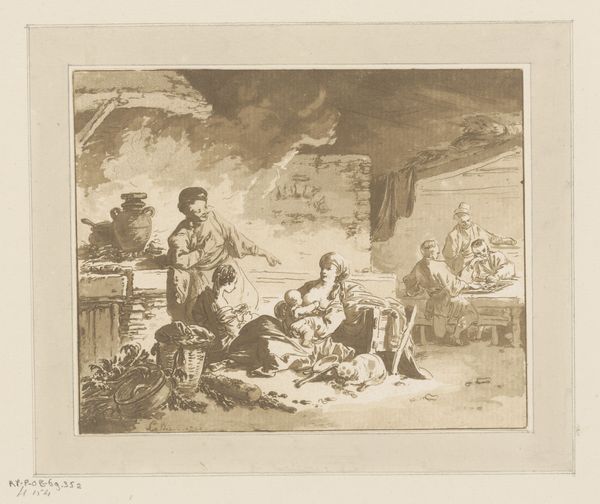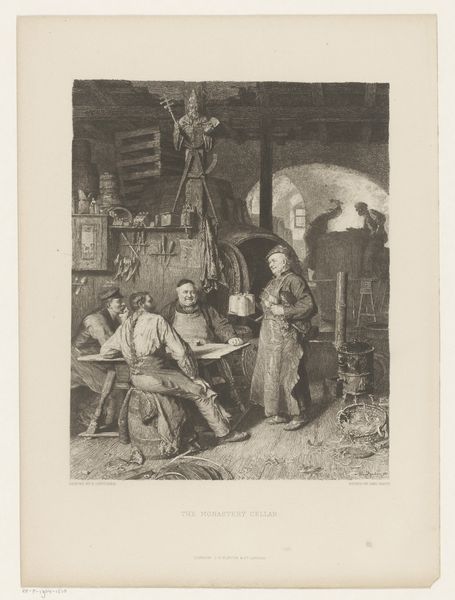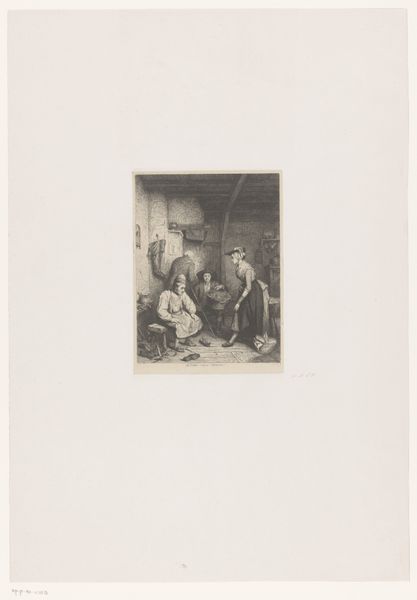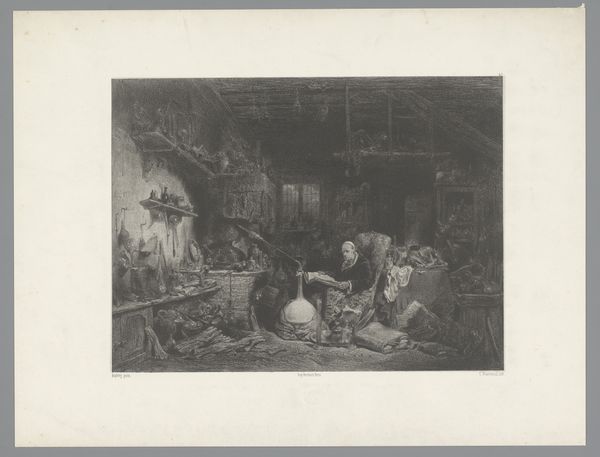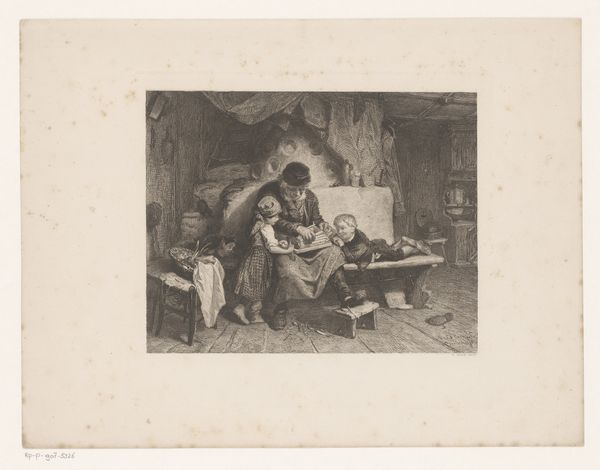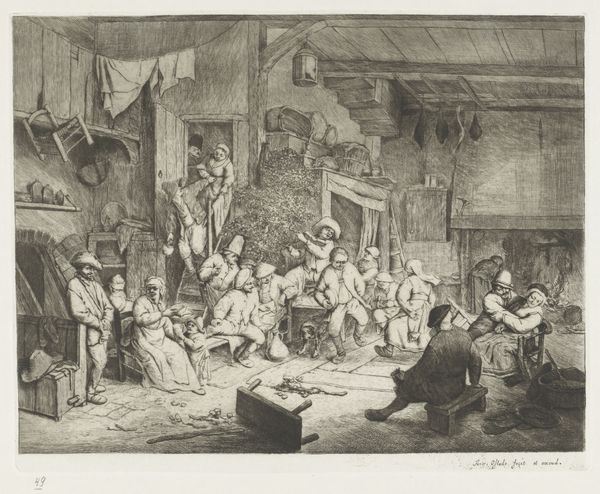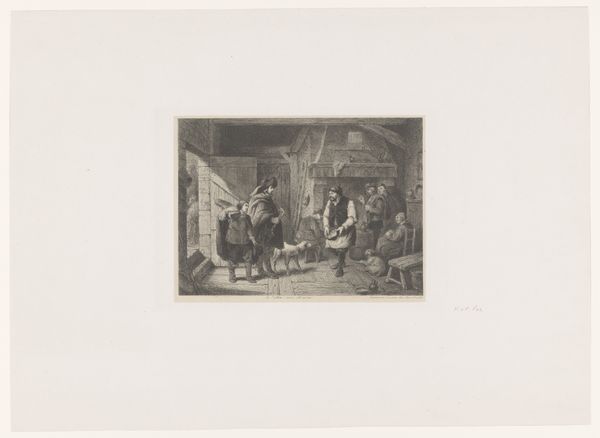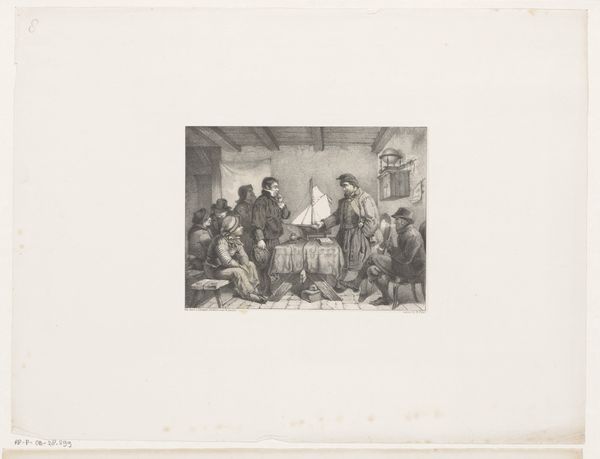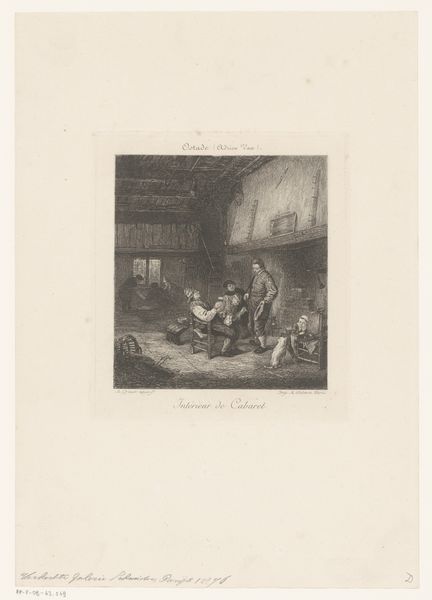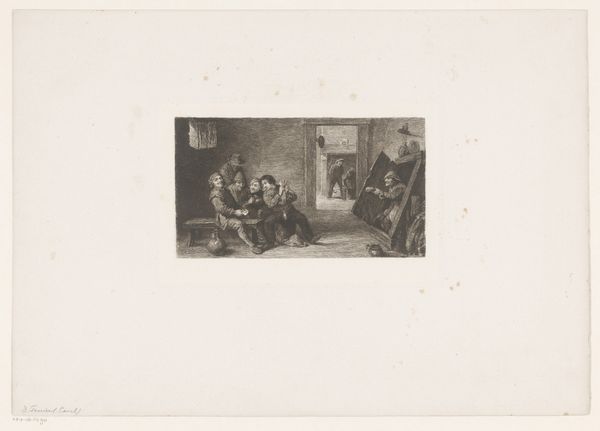
drawing, print, engraving
#
drawing
#
medieval
#
narrative-art
# print
#
genre-painting
#
engraving
Dimensions: 435 mm (height) x 360 mm (width) (plademaal)
Curator: Let's discuss Joel Ballin’s "Skolemesteren," created sometime between 1822 and 1885. It’s currently held at the SMK, Statens Museum for Kunst. Editor: Immediately striking is the image's busy domestic scene. The dark engraving really enhances the sense of enclosure, emphasizing how the light pools and lingers, catching all those wonderfully crafted details of daily life. Curator: It really encapsulates themes common to genre paintings while drawing inspiration from a medieval aesthetic, framing this intersection through an academic lens. The materiality of print, as a repeatable image, democratized art access in its time, creating dialogue between classes. Editor: Yes, consider how the physical limitations of the printing process affected how images were reproduced and distributed; from engravings such as these to distribution by a merchant such as Peter Petersen who aided Ballin financially. But it also evokes deeper questions. Who has access to education and what's the quality of it in these dimly lit circumstances? How does the composition position the authority of the master against a group of young scholars, whose positions differ, revealing their socioeconomic status in turn? Curator: Exactly. It portrays a hierarchical structure, but the composition makes room for a deeper inquiry. What's really the impact of these scholastic values for these people, who probably need to start providing material support for their families since an early age? Education should serve progress. It is never devoid of social obligation, I believe. Editor: I understand that you analyze the social factors around a topic, such as public instruction. This has been key to my reading of it, as well as to Ballin's production. It prompts you to reflect on current production conditions and forms of organization and exchange. The children's clothes, worn and patched, show that access to education might represent a financial commitment and sacrifice for poor families. This perspective on materials and production allows us to broaden art's cultural scope. Curator: In the end, "Skolemesteren" is both an artistic artifact of history and an intersectional inquiry on education, power dynamics, and socio-economic forces. Editor: Agreed. It reminds us that understanding the tangible conditions under which things are made, shared, and used gives insight to society and also on art as part of everyday existence.
Comments
No comments
Be the first to comment and join the conversation on the ultimate creative platform.
